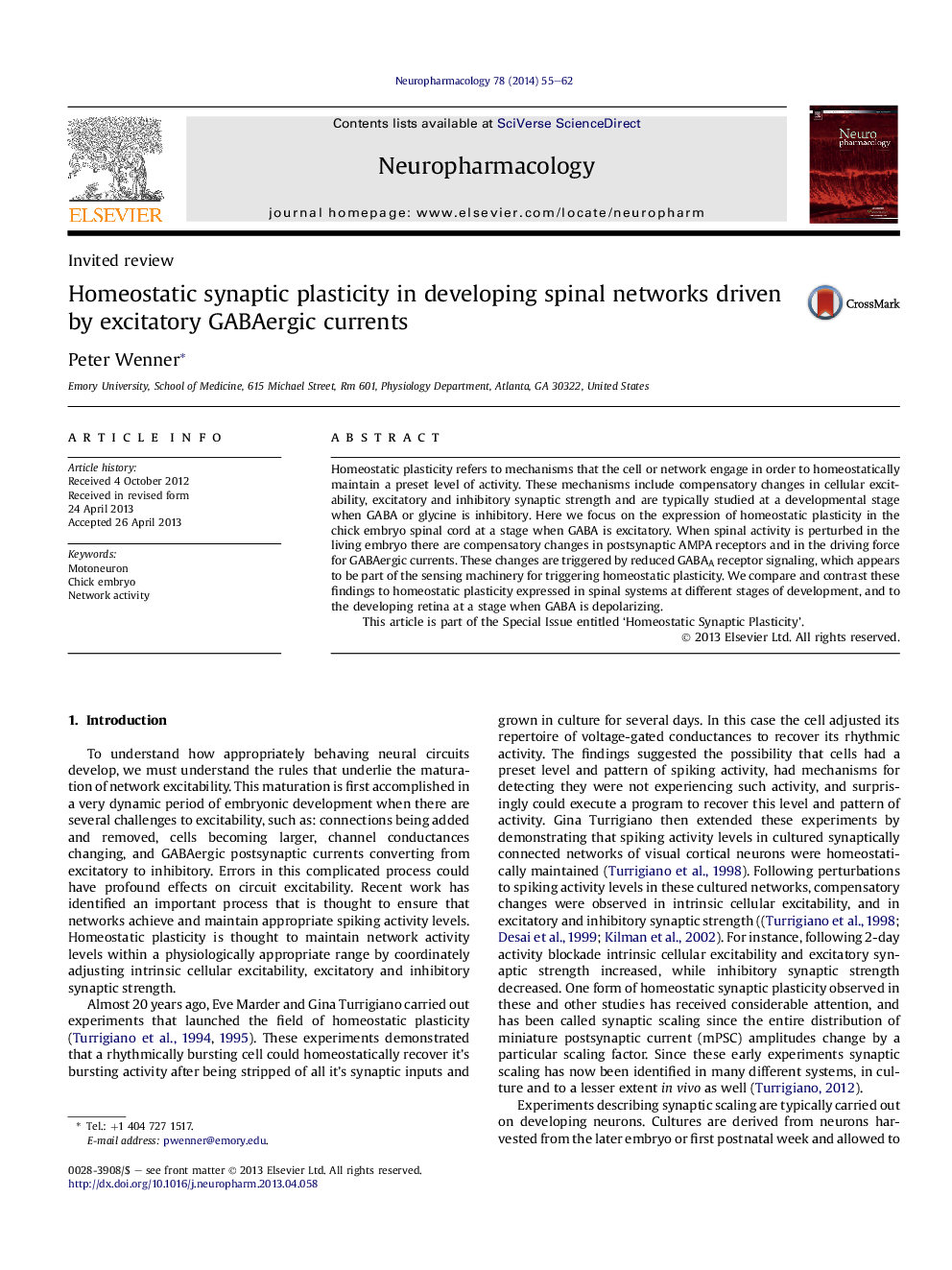| کد مقاله | کد نشریه | سال انتشار | مقاله انگلیسی | نسخه تمام متن |
|---|---|---|---|---|
| 2493314 | 1556636 | 2014 | 8 صفحه PDF | دانلود رایگان |

• We discuss homeostatic plasticity in developing networks at a stage when GABA is excitatory.
• We discuss the mechanisms of homeostatic plasticity in embryonic spinal networks.
• We discuss the sensor for triggering homeostatic plasticity in embryonic spinal networks.
• We compare and contrast homeostatic plasticity in spinal and other networks at different developmental stages.
Homeostatic plasticity refers to mechanisms that the cell or network engage in order to homeostatically maintain a preset level of activity. These mechanisms include compensatory changes in cellular excitability, excitatory and inhibitory synaptic strength and are typically studied at a developmental stage when GABA or glycine is inhibitory. Here we focus on the expression of homeostatic plasticity in the chick embryo spinal cord at a stage when GABA is excitatory. When spinal activity is perturbed in the living embryo there are compensatory changes in postsynaptic AMPA receptors and in the driving force for GABAergic currents. These changes are triggered by reduced GABAA receptor signaling, which appears to be part of the sensing machinery for triggering homeostatic plasticity. We compare and contrast these findings to homeostatic plasticity expressed in spinal systems at different stages of development, and to the developing retina at a stage when GABA is depolarizing.This article is part of the Special Issue entitled ‘Homeostatic Synaptic Plasticity’.
Journal: Neuropharmacology - Volume 78, March 2014, Pages 55–62